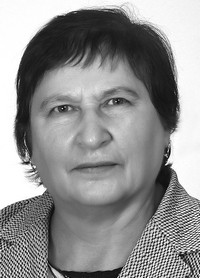FULL BODY TRAINING AS A MEANS OF INCREASING MUSCLE STRENGTH AND BODY WEIGHT OF POWER FITNESS PERSONS
Ключевые слова:
strength fitness, FULL BODY training, SPLIT training, muscle strength, muscle mass.Аннотация
Objective of the study was to determine the effectiveness of FULL BODY training and its effect on increasing muscle strength and mass in people involved in strength fitness.
Methods and structure of the study. The scientific experiment was conducted on the basis of the Graphite fitness center in Aramil from 2019 to 2021. The experiment involved 14 clients of the fitness center, aged 19-30 years. Participants were randomly divided into two groups of seven. The first group trained according to the SPLIT methodology, according to which exercises were performed for two or three specific muscle groups per workout. The second group used the FULL BODY technique, in which one exercise per training session was performed per muscle group.
Results and conclusions. The data obtained in the course of the research work indicate the advantage of FULL BODY training in terms of increasing muscle mass and strength in people involved in strength fitness over SPLIT training, with an equal training volume. In particular, the FULL BODY group showed a significantly greater increase in muscle mass compared to the SPLIT group - 11.25% vs. 5.66%, as well as a significantly greater increase in muscle strength - in barbell squats 35.03% vs. 16.09%; in the bench press - 33.33% versus 20.97%. According to Student's t-test, these differences are considered significant and significant (p<0.05). The results obtained indicate a significant advantage of FULL BODY training. Thus, the conducted study showed the effectiveness of the experimental technique.
Библиографические ссылки
Bompa Tudor, Buzzicelli Carlo A. [Periodization of sports training]. Moscow: Sport publ., 2016. 384 p. ISBN 978-5-906839-01-5.
Vader J. Sistema stroitelstva tela [The body construction system]. Moscow: Fizkultura i sport publ., 1992. 112 p. ISBN 5-278-00212-3.
Contreras B. Anatomiya silovykh uprazhneniy s ispolzovaniyem v kachestve otya-goshcheniya sobstvennogo vesa [Anatomy of strength exercises with the use of own weight as a burden]. Minsk: Popurri publ, 2014. 224 p. ISBN 978-985-15-2152-0.
Seluyanov V.N. Tekhnologiya ozdorovitelnoy fizicheskoy kultury [Technology of health-improving physical culture]. Moscow: TVT Divizion, 2009. 188 p. ISBN 978-5-98724-062-7.
Schlozberg Suzanne, Neporent Liz Fitnes dlya nachinayushchikh [Fitness for beginners]. Moscow: Dialektika publ., 2004. 255 p. ISBN 5-8459-0659-8.
Carla M. Prado, Sarah A. Purcell et al. Implications of low muscle mass across the continuum of care: a narrative revie. Ann Med. 2018 Dec; 50(8): 675-693. doi: 10.1080/07853890.2018.1511918. Epub 2018 Sep 12. Available at: https://pubmed.ncbi.nlm.nih.gov/30169116 (date of access: 29.12.2020).

Дополнительные файлы
Опубликован
Как цитировать
Выпуск
Раздел
Лицензия

Это произведение доступно по лицензии Creative Commons «Attribution» («Атрибуция») 4.0 Всемирная.
